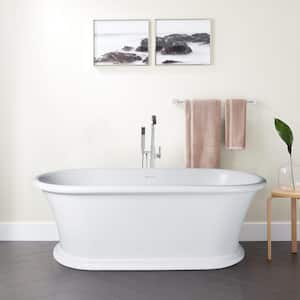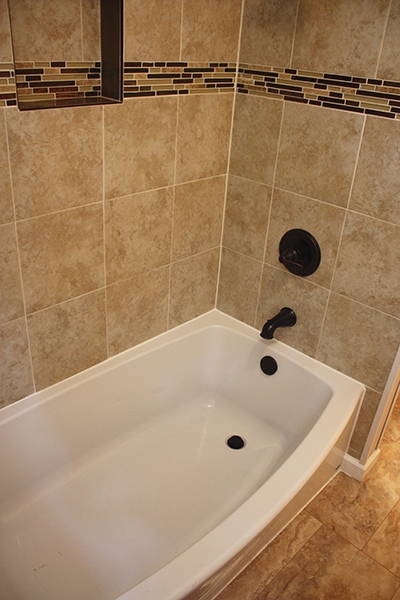Can I Set Up A Tub Myself?
Can I Set Up A Tub Myself?
Blog Article
Everybody maintains their own individual thinking on the subject of How to Install a Bathtub: Install an Acrylic Tub and Tub Surround.

Setting up a tub isn't specifically rocket science, however it does call for strong plumbing, carpentry, as well as occasionally, tiling skills. Replacing an old tub with a brand-new one is also a moderately hard task. If the old tub is easily easily accessible, the task can move immediately; if you need to open a wall to eliminate the old bathtub and also place the new tub, the job is a lot harder. In either case, the job is within a house handyman's abilities, although you will certainly need a helper to leave the old bathtub and also embeded in the brand-new one. Make sure you have qualified yourself for the task and also fit attempting it. Rather than hiring a specialist to take control of a halfway-completed task, it is better to consider utilizing one before you begin. Chances are you may need an expert plumber to make tube connections.
This post will certainly aid you mount a brand-new bath tub in your bathroom if you have already bought a new tub and don't need to change the arrangement of your previous water supply pipes.
Your devices and also product list need to consist of the following:
Removing Old Touches
If you require to change old faucets with brand-new ones as a part of your setup, then the first thing you ought to do is disconnect the water supply. After doing so, turn on the faucets to drain pipes any kind of water staying in the system. The process of eliminating the existing taps can be quite bothersome as a result of the limited gain access to that is typically the situation.
Use a basin wrench (crowsfoot spanner) or a faucet device to reverse the nut that links the supply pipes to the faucets. Have a towel prepared for the staying water that will come from the pipelines. When the supply pipes have been gotten rid of, make use of the exact same tool to loosen up the nut that holds the faucets onto the bath/basin. You will need to quit the solitary taps from turning throughout this procedure. Once the taps have actually been eliminated, the holes in the bath/basin will need to be cleaned up of any type of old sealing substance.
Before moving on to fit the brand-new taps, compare the pipeline connections on the old taps to the brand-new taps. If the old taps are longer than the brand-new taps, then a shank adapter is needed for the new faucets to fit.
Suitable New Taps
If the tails of the brand-new faucets are plastic, then you will certainly need a plastic connector to stop damage to the thread. One end of the port fits on the plastic tail of the tap and also the various other end provides a link to the existing supply pipelines.
If you require to fit a monobloc, then you will certainly require lowering couplers, which links the 10mm pipe of the monobloc to the common 15mm supply pipe.
Next off, position the faucet in the installing opening in the bath/basin making sure that the washing machines remain in place in between the tap as well as the sink. Secure the faucet in place with the maker provided backnut. As soon as the tap is safely in position, the supply pipes can be attached to the tails of the taps. The faucets can either be connected by utilizing corrugated copper piping or with normal faucet connectors. The former kind ought to be attached to the tap finishes first, tightening up only by hand. The supply pipes can later on be connected to the various other end. Tighten both ends with a spanner after both ends have been attached.
Setting up the Bath tub
Using both wood boards under its feet, place the bath tub in the required setting. The wood boards are useful in equally spreading the weight of the tub over the location of the boards instead of focusing all the weight onto 4 tiny factors.
The following goal is to make sure that the bath tub is leveled all round. This can be achieved by inspecting the level and changing the feet on the bath tub until the spirit level checks out degree.
To install taps, fit all-time low of the outermost flexible tap adapter to the suitable supply pipeline by making a compression sign up with; then do the exact same for the various other faucet.
Activate the supply of water as well as examine all joints and new pipework for leaks as well as tighten them if needed. Fill up the tub and additionally examine the overflow outlet and also the regular electrical outlet for leakages.
Lastly, repair the bathroom paneling as defined in the supplier's instruction manual. Tiling and sealing around the tub must wait till the bath tub has actually been used at least once as this will settle it into its final setting.
Getting ready for the Setup
First of all, the sustaining structure provided with the bathroom needs to be fitted (if called for) according to the supplier's guidelines. Next off, fit the faucets or mixer to the bath tub. When suitable the faucet block, it is very important to make certain that if the faucet includes a plastic washer, it is fitted between the bath and the taps. On a plastic bath, it is also sensible to fit a supporting plate under the taps device to stop pressure on the bath tub.
Fit the adaptable faucet ports to the bottom of the two taps using 2 nuts and olives (sometimes provided with the tub). Fit the plug-hole outlet by smearing mastic filler round the sink outlet hole, and afterwards pass the electrical outlet with the hole in the bath. Use the nut provided by the manufacturer to fit the plug-hole. Analyze the plug-hole outlet for an inlet on the side for the overflow pipeline.
Next off, fit the end of the flexible overflow pipeline to the overflow electrical outlet. Afterwards, screw the pipe to the overflow face which should be fitted inside the bathroom. See to it you make use of every one of the supplied washers.
Connect the catch to the bottom of the waste electrical outlet on the bathtub by winding the thread of the waste electrical outlet with silicone mastic or PTFE tape, as well as screw on the trap to the outlet. Attach all-time low of the overflow tube in a similar manner.The bath need to now be ready to be suited its last setting.
Tiling Around the Bathtub
In the location where the bath meets the floor tile, it is needed to seal the accompanies a silicone rubber caulking. This is necessary as the fitting can relocate sufficient to crack an inflexible seal, triggering the water to penetrate the wall surface between the bathroom as well as the tiling, leading to difficulties with dampness and also feasible leaks to the ceiling listed below.
You can select from a selection of coloured sealants to assimilate your components and installations. They are sold in tubes and also cartridges, as well as are capable of securing gaps approximately a width of 3mm (1/8 inch). If you have a bigger space to load, you can fill it with spins of soaked newspaper or soft rope. Keep in mind to always fill up the bath tub with water before securing, to allow for the motion experienced when the bathtub is in usage. The sealer can break rather early if you do not take into consideration this activity before securing.
Conversely, ceramic coving or quadrant tiles can be utilized to border the bath or shower tray. Plastic strips of coving, which are easy to use as well as reduce to size, are likewise conveniently available on the market. It is suggested to fit the tiles using waterproof or water-proof adhesive and cement.
Bathtub Installation
How Important Is A Bathtub To Your Home?
High-quality baths, showers, and other bathroom updates are necessary when considering a smart investment in your home. It’s a room that you go to every day and one that is constantly being used by guests.The bathroom is one of the top trafficked rooms in a home and also one of the most valuable in terms of home resale.
Install Piping Before Tub
You will be using your existing drain and waste vent system, but pipes required include the hot and cold water supply lines and a pipe leading to a shower head. A mixing valve and shower head are also needed. Air chambers may be required.
Position the Tub
Lower the tub into place so that the continuous flange fits against the wall studs and rests on 1’x4' or 2’x4' supports. Anchor the tub to the enclosure with nails or screws inserted through the flanges into the studs.
NOTE: Remember, bathtubs and shower stalls may require support framing. A bathtub filled with water is extremely heavy, so check building codes and framing support before installing the tub.
Assemble Drain Connections
Assemble the bathtub drain connections by connecting the tub overflow with the tub drain above the trap, not beyond it. The trap will have a compression fitting that screws over the arm of the overflow assembly.
Place a Pipe For the Shower Head
First, locate a brass female threaded winged fitting and attach it to a framing support via a screw or a nail. Then run a pipe up the wall for the shower head. Sweat or solder the other side of the brass fitting to the top of the pipe.
Attaching Hot and Cold Water Lines
Attach your water lines for both hot and cold by sweating these directly into the hot and cold ports of the mixing valve. The mixing valve will be how water enters the tub’s system, not by the pipes themselves.
Install the Spout
Extend a piece of 1/2 inch pipe, or whichever length is specified in the manufacturer’s instructions, for the tub spout. Sweat on a male threaded fitting at the end of the pipe or use a brass nipple of the proper length and a 1/2 inch cap.
NOTE: At this point you should have your rough-in plumbing work inspected before proceeding further.
Check For Leaks
Restore the water pressure and check the drain connection and the supply pipes for any sign of leaking.
estore the Bathroom Wall
Replace the wall with moisture-resistant drywall as a base for your wall covering. Seal the joints between the wall and your new tub with silicone caulk as protection against water seepage.
https://www.berkeys.com/2016/12/02/bathtub-installation-dallas/

Do you enjoy more info about Installing A Bathtub? Leave a review down below. We would be pleased to see your opinions about this blog post. We hope that you visit us again soon. Are you aware of anybody else who is in to the niche? Please feel free to share it. Thanks so much for your time spent reading it.
Schedule Service Pickup
Report this page